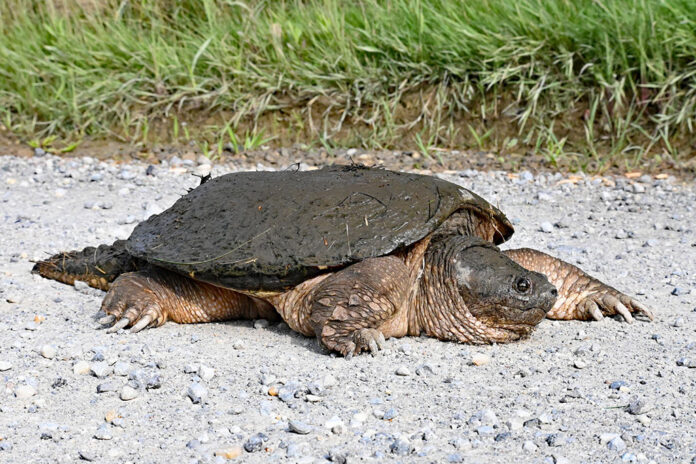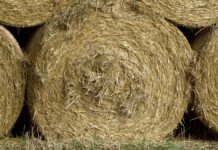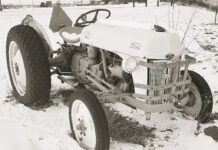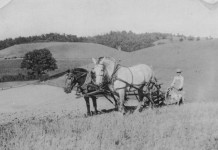OK, I’ll admit it. I’m always the one tying up traffic when there is a reptile in the road. Whether it be a snake or a turtle, when I see an individual trying desperately to navigate its way across a busy avenue, I quickly pull over, throw on the flashers and jump out to help.
Goodness knows that in a world where vehicles are becoming unbelievably ubiquitous and people, less and less aware of their surroundings, sometimes our wildlife needs a helping hand.
I get mixed reactions from passersby, most of whom have been held up by my mission. Some people smile and wave, some stop and offer to help, others open their window and personally thank me for a good deed well done, while some angrily flash me the bird.
Frankly, I don’t care what people think, I’m in it for the wildlife’s sake, and right now, I am gearing up to assist the big gals, the snapping turtles, as their egg laying season kicks into gear. Reluctantly, female snappers must leave the safety of their aquatic environments to locate the perfect soil conditions which will assist in the incubation of their eggs. This search often takes them across busy roads, and many don’t live long enough to achieve egg-laying success or to safely make the return trip to their home base.
Living dinosaurs
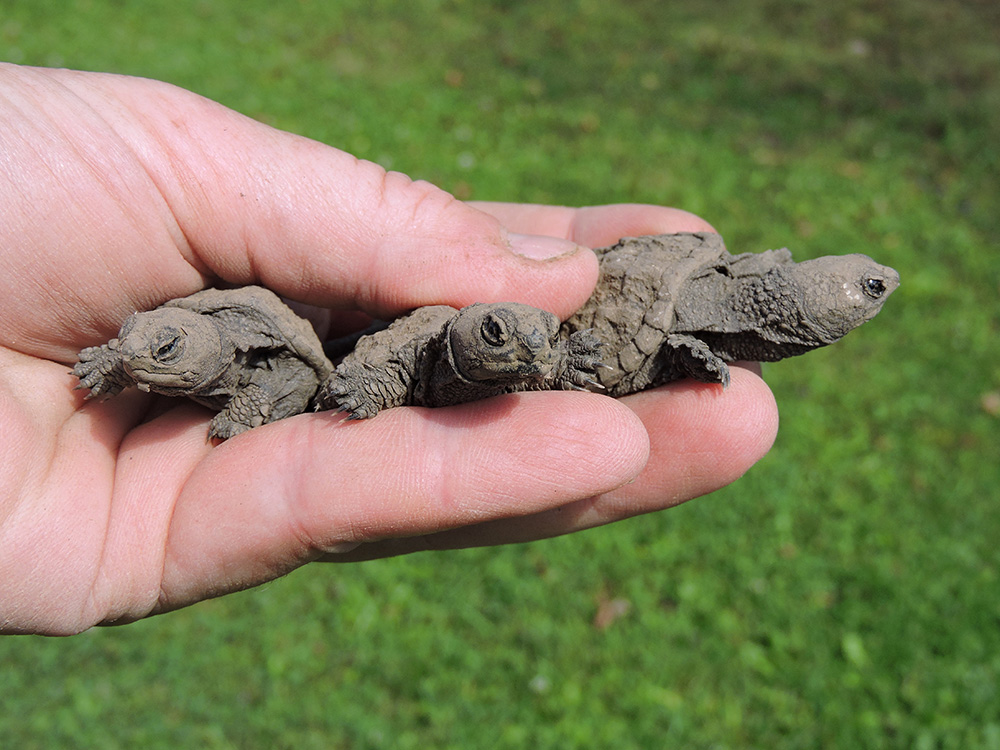
One of the oldest surviving turtle species on earth, snapping turtles can be likened to a living dinosaur. The snapping turtle (Chelydra serpentina) is the largest turtle in the northeastern U.S. Adult males, which are always larger than the females, can easily weigh over 35 pounds with a jagged shell that measuring in excess of 14 inches in length. The turtles continue to grow throughout their lives, and some are thought to have approached 100 years of age. This amazing longevity is said to be a result of their low metabolism, their pugnacious personality, their incredible physique and their ability to adapt to many different situations.
Snappers are freshwater turtles, but because they spend the majority of their time submerged beneath the surface rather than basking in the sun, they are not often observed despite the fact that they are quite common. Their favorite habitats include ponds, wetlands and streams. Snappers are omnivorous, feeding on both plant and animal matter. They are generalists, not only eating large amounts of aquatic vegetation, but they have also been observed scavenging on carrion.
Snapping turtles are adept hunters and will prey on just about anything they can swallow, including invertebrates, frogs, fish, snakes and even small birds and mammals. Their negative effect on the waterfowl population due to consumption of duckling and goslings, however, is greatly exaggerated. Snappers themselves are often the main ingredient in turtle soup, although it is now being proven that concentrations of toxic pollutants within the turtles’ flesh is becoming an alarming health concern.
Egg laying

Snapping turtles can be observed mating from April through November, and females have the amazing ability to store the males’ sperm within their bodies for several years for use when they are ready. June and July are the peak egg-laying months for snapping turtles, and females must leave the safety of their aquatic abodes and embark on perilous journeys to reach areas with the perfect soil conditions in which to deposit their eggs. Soils containing sand as well as mulch (which provides heat) are the perfect recipe, which is why the turtles are often observed depositing their eggs in landscaping features.
Using her powerful back legs and impressive claws, the female snapping turtle excavates a cavity in the soil and egg laying commences. Looking exactly like ping-pong balls, she slowly deposits the 25-80 leathery-shelled eggs, carefully using her hind feet to guide and position them into place within the hole. When the clutch is complete, she deftly replaces the dirt and sand on top of them, patting it firmly into place.
Egg development depends on the temperature. In warmer climes, they may hatch in just over 60 days, while colder locations might take up to 18 weeks. It is interesting to note that the sex of snapping turtle hatchlings is determined by temperature. Extremely high or low temperatures result in females, while intermediate temperatures produce males.
Although adult snapping turtles have few predators, their eggs often fall prey to raccoons, skunks, foxes, coyotes, minks and crows. These egg predators search for turtle nests by looking and feeling for disturbed soil or using their noses to detect the scent of turtle musk left in the dirt. An empty, excavated hole surrounded by the white, shriveled eggshells is usually all that remains of a predated nest, come morning. Hatchling turtles themselves are popular menu items for these same predators in addition to herons, hawks, owls, bullfrogs, snakes and fish.
Observation
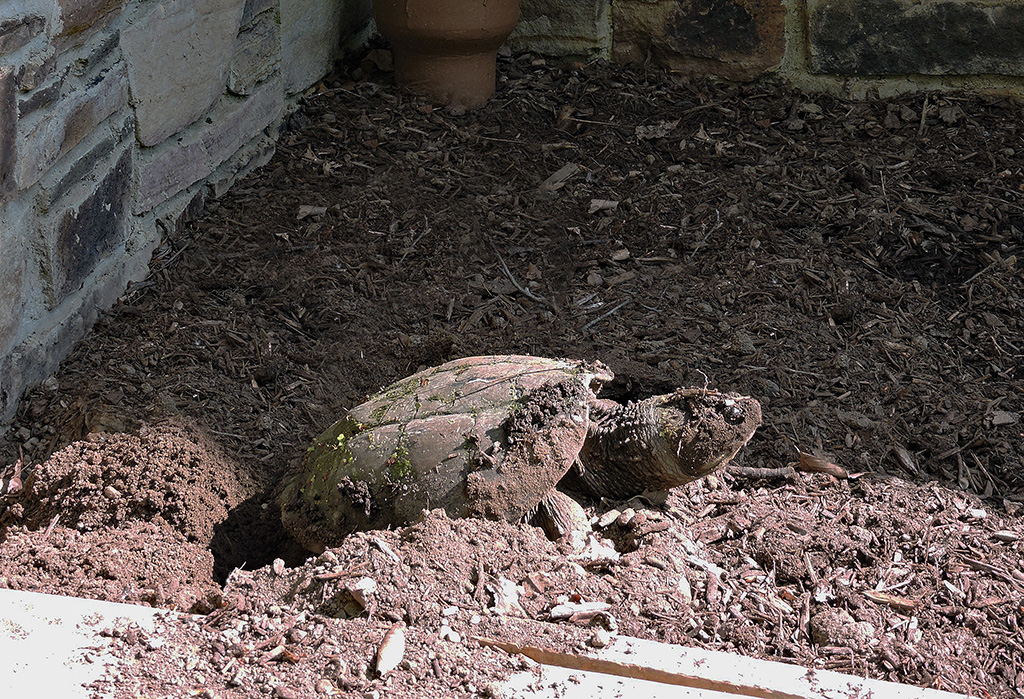
I spent an entire day observing a female snapping turtle that showed up outside the back door of the nature center where I worked. The soil there must have been exactly what she was looking for. I set up a chair and decided I was in it for the long haul, photographing and videoing every aspect of her progress. Hours later, she covered her work, dropping off the side of the stoop and determinedly making her way back to the nearby wetland.
I immediately cut a large piece of screening, using heavy rocks to hold it down over the nest’s location. I wasn’t taking any chances of seeing this hard work fall prey to raccoons. Just 3 months later, I was elated to see tiny snapper hatchlings scrambling out of the soil beneath the screening. I removed the protection, and the adorable babies went scurrying marsh-ward. I have pieced together many of the video clips mentioned in this experience to create a short presentation of this memorable event. You can view it on my YouTube page at this link: https://youtu.be/JE0DwI7KBok
Snapping turtles want about as much to do with you, as you do with them. In the safety of their aquatic environment, they will always flee rather than confront a threat. Yet when they are on land, they feel incredibly vulnerable, and it is here where they most often demonstrate their aggression. If you attempt to approach them, they will hiss, lunge and, yes, snap at you in defense. Snappers have powerful beak-like jaws that will deliver a painful bite. Yet there has never been a documented case of a snapping turtle biting off a finger or a toe!
Road rescues
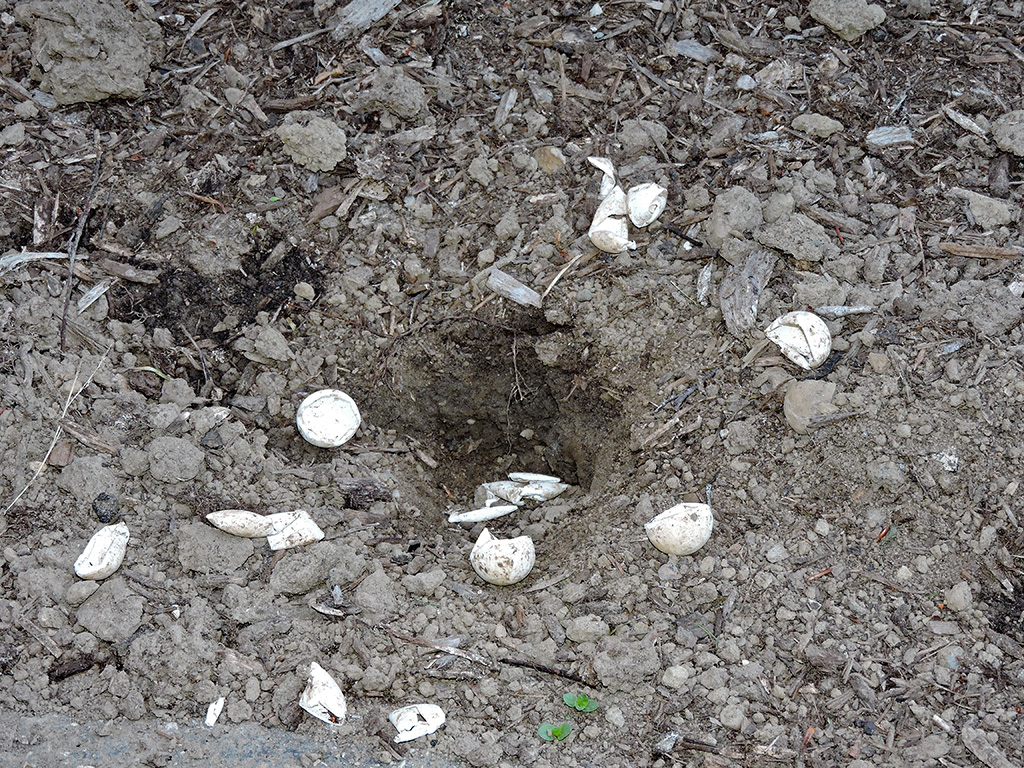
Despite not having many natural predators, adult snapping turtles may be at risk of extirpation from road mortality. I can’t tell you how many times I have seen a vehicle swerve in a deliberate effort to hit a turtle. I even know of someone that went into a ditch and ruined their vehicle while trying to do so (karma). That’s why I have made it my mission to help every turtle that I come across, as long as safety allows.
Picking up a turtle by the tail is one of the worst things you can do, as this often damages their vertebral column. If a snapper is small enough that I can lift it, I will place my hands on the only safe spot, around the shell on either side of the tail. This is the one place they cannot reach as they stretch their heads backward in an attempt to bite. But for the big girls, I keep a feed bag and a shovel in my truck. Lifting the back of the turtle off the ground and quickly sticking the bag beneath allows for an easy drag to safety. Car mats also come in handy for such situations.
Keep in mind that whenever you relocate a turtle off the road, ALWAYS move it in the direction which it is pointing! And remember, if you ever come across a girl holding up traffic in an effort to move one of these amazing creatures to safety, please, go easy on her!






